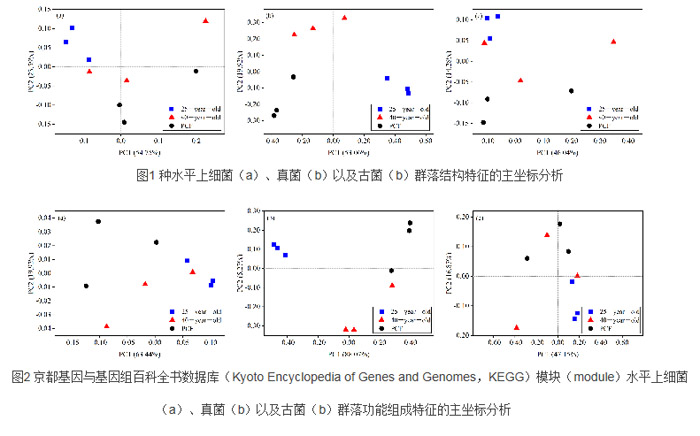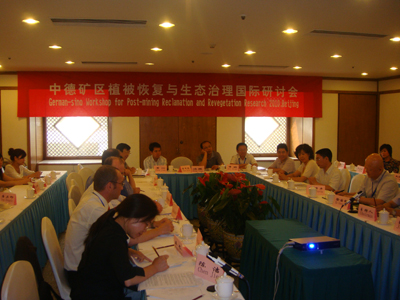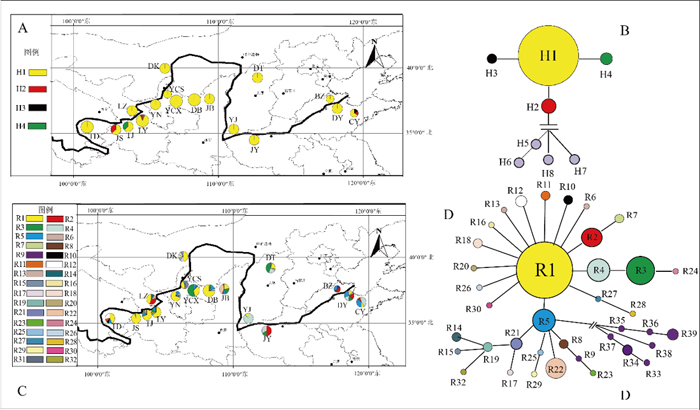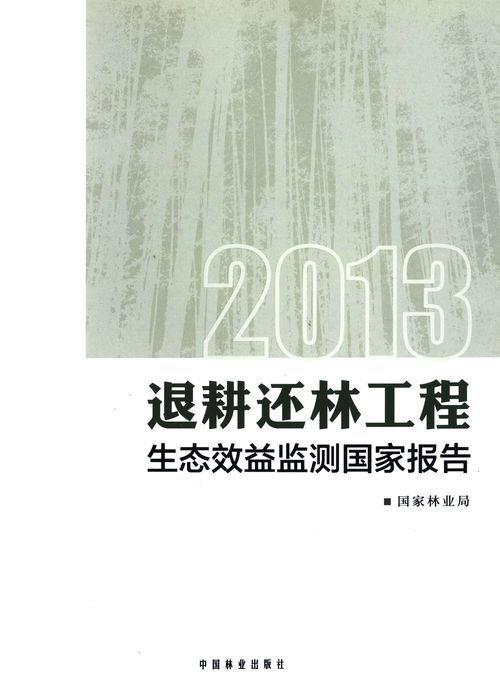
萨王纳群落研究进展
编号
lyqk002590


中文标题
萨王纳群落研究进展


期刊名称
世界林业研究


年份
2008


卷号
21


期号
6


栏目编号
1


栏目名称
专题论述


中文摘要
Savanna是世界上一种比较特殊的群落类型,也是一种正在迅速退化的群落。其分布地域广,面积大,受人为影响严重。对Savanna群落的研究有助于了解其植被生长状况与环境,提高可持续利用与管理水平。文中对近年来国外有关Savanna群落的研究内容和相关结果进行了简要的总结,其中包括咨铡⒎拍烈约翱撤ザ云湓斐傻挠跋?Savanna群落主要物种生理特征、生长状况,树-草动态平衡系统以及Savanna地区造林等,并希望为我国相似区域植被的恢复与重建提供一定的参考。


基金项目
国家科技支撑计划项目(2006BAD03A03);国家“十五”科技攻关项目(2004BA606A-07);国家科技部公益性课题(2000DIB50164)


英文标题
Research Advances in Savanna Community


作者英文名
Liu Fangyan and Li Kun


英文摘要
Savanna is a special community in the world,and also a rapidly degrading community.It has a widely distribution and a big area cover,but it has been seriously influenced by human's activities.Studies on savanna are of great benefit for people to realize its grown characters and conditions,so that we could improve the ability of sustainable use and management.In this paper,the authors give a brief summarization of research contents and correlative results in some foreign papers about savanna which include the influence of fire,grazing and clearing on savanna,the plant physiology and growth characters of main species in savanna,tree-grass dynamic balance and afforestation in savanna etc.,the authors try to give some useful advice for the vegetation restoration and re-construction in the similar area of China.


英文关键词
savanna;community type;vegetation restoration;research advances


起始页码
25


截止页码
30


投稿时间
2008/4/8


分类号
S718.54


参考文献
[1] Fulco Ludwig, Hansde Kroon, Frank Berendse, et al The influence of savanna trees on nutrient water and light availability and the understorey vegetation [J]. Plant Ecology, 2004, 170: 93-105.
[2] Strahler A N, A H Strahler. Modern physicalgeography[M]. New York: John Wiley& Sons, 1978.
[3] Scholes R J, Walker B H. An A frican savanna: synthesis of the Nylsvley study [M]. Cambridge: Cambridge University Press,1993.
[4] Stott P. Stability and stress in the savanna forests of mainland South-East Asia[J]. J Biogeogr, 1990, 17: 373-383.
[5] Steven De Bie, Pleter Ketner, Martine Paasse, et al. Woody plant phenology in the west Africa savanna [J]. Joumal of Biogeography, 1998, 25: 883-900.
[6] 金振洲. 滇川干热河谷与干暖河谷植物区系特征 [M]. 昆明:云南科技出版社, 2002: 10-12.
[7] Russell-Smith J, Ryan P G, DuRieu R. A LANDSTT MSS-derived firehistory of Kakadu National Park, monsoonal northem Australia, 1980-1994: seasonal exten,t frequency and patchiness[J]. J Appl Ecol 1997, 34: 748-766.
[8] Edwards A, Hauser P, Anderson M, et al A tale of two parks: contem porary fire regmies of Litchfield and Nitmiluk National parks, nonsoonal northern Australia[J]. Int J Wild Fire, 2001, 10: 79-89.
[9] Fensham R J, Fairfax R J, Butler D W, et al Effects of fire and drought in a tropical eucalypt savanna colonized by rain forest[J]. Joumal of Biogeography, 2003, 30 (9): 1405-1414.
[10] Hofmfann W A, Schroeder W, Jackson R B. Positive feedbacks of fire, clmiate, and vegetation and the conversion of tropical savanna[J]. Geophysical Research Letters, 2002, 29 (22): 9/1-9/4.
[11] Walters M, Milton S J. The production, storage and viability of seeds of Acacia karroo and A. nilotica in a grassy savanna in Kwazulu-Nata,l South Africa[J]. African Journal of Ecology, 2003, 41 (3): 211-217.
[12] Warcup J H. Effects of heat treamtent of forest soilon germination of buried seed[J]. Aust J Bot, 1980, 28: 567-571.
[13] Auld T D, O ConnellM A. Predicting patterns of post-fire germination in 35 eastern Australian Favaceae[J]. Aust J Ecol 1991, 16: 53-70.
[14] Paul R Williams, Robert A Congdon, A nthony C Grice, et al Soil temperature and depth of legume germination during early and late dry season fires in a tropical eucalypt savanna of north-eastern Australia[J]. Austral Ecology, 2004, 29: 258-263.
[15] Jeremy Russell-Smith, Peter J Stanton, Peter J W hitehead, et al Rain forest invasion of eucalyptdom inated woodland savanna, Iron Range, northeastern Australia: I. successional processes[J]. Journal of Biogeography, 2004, 31: 1293-1303.
[16] Fynn R W S, O Connor T G. Effect of stocking rate and rainfall on rangeland dynamics and cattle performance in a semi-aridsavanna, South Africa [J]. Journal of Applied Ecology, 2000,37: 491-507
[17] Skarpe C, Bergstrom R, BratenA L, et al. Browsing in a heterogeneou s savanna[J]. Ecography, 2000(23): 632-640.
[18] Mentis M T. Optimizing stocking rate under commercial and subsistence pastoralism [J]. J Grassl Soc S A fr 1984, 1: 20-24.
[19] Steven I Higgins, Charlie M Shackleton, E Robbie Robinson. Changes in woody community structure and composition under constrasting landuse systems in a semiarid savanna, South Africa[J]. Journal of Biogeography, 1999, 26: 619-627.
[20] Shackleton C M. Fuelwood harvesting and sustainable development in a communal grazing land and protected area of the eastern Transvaal Lowveld[J]. Biol Conserve, 1993, 63: 247-254.
[21] Shackleton C M. Stumpsize and the number of coppice shoots for selected savanna tree species [J]. South African Journal of Botany, 2000, 66 (2): 124-127.
[22] Ackleton C M. Managing regrow th of an indigenous savanna tree species(Terminalia sericea) for fuewlood: the influence of stump dmiensions and postharvest coppice pruning[J]. Biomass and Bioenergy, 2001, 20(4): 261-270.
[23] Luoga E J, Wrrkow ske E T F, Balkwill K. Regeneration by coppicing (resprouting) of miombo (African savanna) trees in relation to landuse[J]. Forest Ecology and Management, 2004, 189(1/3): 23-25.
[24] Reich P B, Ellsworth D S, Walters M B. Generality of leaf train relation ships: a test across six biomass[J]. Ecology, 1999, 80:1955-1969.
[25] Naves-Barbiero C C, Franco A C, Bucci S J, et al. Sap flow and stomatal conductance in two evergreen woody species in an open savanna and a savanna wood land [J]. Revista Brasileira de Fisiologia Vegetal, 2000, 12(2): 119-134.
[26] Robert J Scholes, Peter G H Frost, Yuhong Tian. Canopy structure in savannas along a moisture gradient on Kalahari sand s[J]. Global Change Biology, 2004, 10: 292-302.
[27] Salako F K, Tian G L. Root distribution of two woody species grown on farmers fields in the Southern Guinea Savanna Zone of Nigeria[J]. Communications in Soil Science and Plant Analysis, 2004, 35 (17/18):2577-2592.
[28] Aweto A O, Dikinya O. The beneficial effects of two tree species on soil properties in a semi-arid savanna rangeland in Botsw ana[J]. L and Contam ination & R eclamation, 2003, 11(3): 339-334.
[29] Belsky A J, Amundson R G, Duxbury J M. The effects of trees on their physical, chemical and biological environments in a semiarid savanna in Kenya[J]. Journal of Applied Ecology, 1989, 26: 1005-1024.
[30] Archer S, Scifres C J, Bassham C R, et al. Autogenic succession in a tropical savanna: conversion of grassland to thorn woodland [J]. Ecological Monographs, 1988, 58: 111-127.
[31] Bond W J, Van Wilgen B W. Fire and plants[M]. London, UK: Chapman and Hau 1996.
[32] Scholes R J, Archer S R. Tree-grass in teractions in savannas [J]. Ann Rev EcolSyst 1997, 28: 517-544.
[33] Pandey D. Hardwood plantations in the tropics and subtropics [G]//Tropical forest plantations area in 1995. CIFOR Occasional Paper. Bogor, Indonesia: CIFOR, 1997: 76.
[34] Bouvet J M. Lesplantations d Eucalyptus. Evolutions rcenteset perspectives[J]. Le Flamboyant, 1999, 49: 4-14.
[35] Mboukou-Kmibatsa I M C, Bernhard-Reversat F, Loumeto J J Change in soil macrofaun a and vegetation when fast-growing trees are planted on savanna soils[J]. Forest Ecology and Management, 1998, 10(5): 1-12.
[36] Loumeto J J, Huttel C. Understory vegetation in fast-growing tree plantations on savanna soils in Congo[J]. Forest Ecology and Management 1997, 12: 65-81.
[37] Abbasi S A, Vinithan S. Ecological mipacts of eucalyptus-myths and realities[J]. Indian Forester,1997, 123: 710-739.
[38] Bouvet J M. Les plantations d Eucalyptus evolutions rcenteset perspectives[J]. Montpelier, France Internal Note CIRAD-Fort 1998, 35.
[39] Bouillet J P, Safou-Matondo R, Laclau J P, et al Fertilisation: a crucial factor for the sustainability of eucalyptus plantations in the Congo[J]. Boiset Fortsdes Tropiques, 2004, 279: 23-35.
[40] Herbert M A. Fertilizers and eucalyptus plantations in South Africa[G]//Atti will P M, Adams M A (eds.) . Nutrition of eucalyptus. Colling wood, Australia: SIRO Publishing, 1996: 303-325.
[41] Kristensen M, Lykke A M. Informant-based valuation of use and conservation preferences of savanna trees in Burkina Faso [J]. Economic Botany, 2003, 57(2): 203-217.
[42] Alan N Andersen, Garry D Cook, Laurie K Corbett et al Fire frequency and biodiversity conservation in Australian tropical savannas: implications from the Kapalga fire expermient [J]. Austral Ecology, 2005, 30: 155-167.
[43] Jrme Orgeas, Alan N Andersen. Fire and biodiversity: responses of grass-layer beetles to experimental fire regimes in an Australian tropical savanna[J]. Joumal of Applied Ecology, 2001,38: 49-62.


PDF全文
浏览全文


-
相关记录
更多
- 林业企业融资研究进展 2022
- 围栏封育对环县北部沙地植被恢复种类数量的影响 2023
- 计划火烧对植被和土壤影响研究综述 2022
- 西昌市泸山景区森林火灾后植被恢复现状 2022
- 基于视觉感知的植物色彩景观研究进展 2021
- 芳香植物在疗愈环境设计中的应用研究进展 2024
 打印
打印





